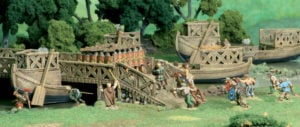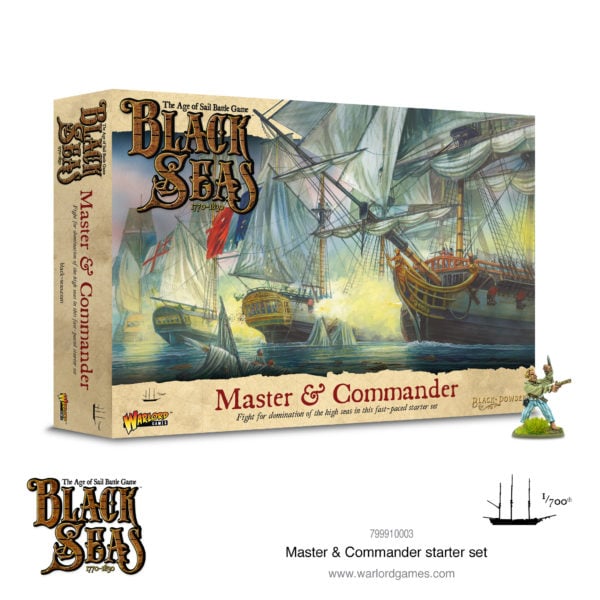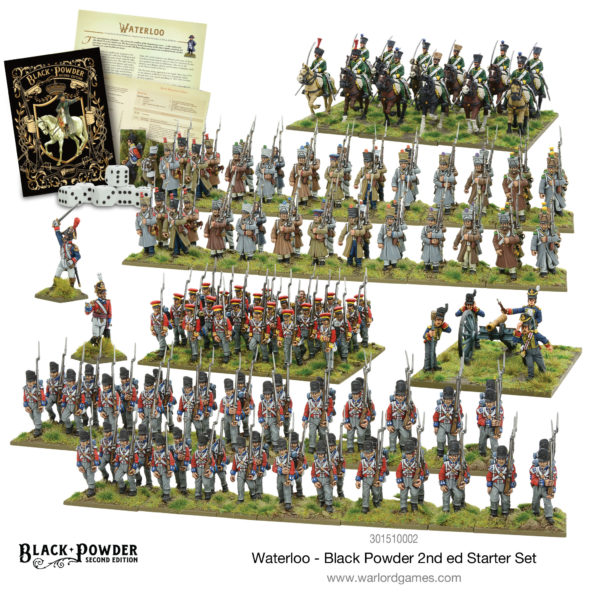
Black Seas: Amphibious Warfare
With the release of Black Seas this month, we’ve added a whole new dimension to games of Black Powder. Amphibious operations have begun!
Since the dawn of civilisation, the sea has been both a blessing and a curse to military planners. On the one hand, it allowed the rapid redeployment of troops across a continent-spanning empire, while on the other it provided a near-insurmountable obstacle, stronger than even the toughest fortification.
At many points across history, it has become necessary to land a body of men on a hostile coastline, oftentimes opposed by a highly motivated and determined foe.
While the initial landings and establishment of a beachhead were crucial to success, these operations were often won or lost at the strategic level – if an enemy fleet was able to interdict the invasion force, or cut the beachhead off from supplies and reinforcements, the landings would fail.
Amphibious Operations during the Napoleonic Wars
The conflict between the nascent empires of Britain, France and Spain spiralled out of control in the early 19th century, and suddenly colonies across the globe became military targets. Many of these colonies would be raided by marine units mounted on warships, or by dedicated assault forces composed from army units.
Landing these forces always proved to be difficult – there was no dedicated assault craft available, and most commanders resorted to using ship’s boats, which were only able to land a few men at a time, requiring many trips to unload sufficient concentrations of troops.
During the crossing from ship to shore, these flimsy boats would be engaged by shore mounted artillery batteries and small arms, often causing massive casualties.
One example of a successful amphibious operation took place during the Egyptian campaign in 1801.
The Battle of Aboukir
A British expeditionary force was dispatched to the Nile delta to engage the 21,000 troops remaining from Napoleon’s ill-fated Egyptian expedition. Guarded by seven ships-of-the-line, five frigates and numerous smaller vessels, the 17,500-strong British force landed at Aboukir against stiff French opposition.
The initial force of 5,000 soldiers was bombarded by ten French siege guns, and was quickly engaged by infantry and cavalry upon gaining the beach. Only stout musketry and naval gunfire support allowed the British to establish their beachhead and move inland, where they would meet the French again at the battle of Alexandria!
Landing Troops in Black Powder and Black Seas
Black Seas gives you the opportunity to recreate these campaigns on your tabletop! We suggest playing the following scenarios in order, with the following consequences for success or failure.
- Scenario 1: Coastal Raid (Black Seas Pg.44) A squadron from the invasion fleet has been detailed to neutralise enemy coastal defences. If the attacking force fails to achieve its objectives, the defender gains a free shore battery in the next scenario.
- Bonus Battle: During the Coastal Raid scenario, marines from the attacking ships have the opportunity to pillage a town. This is the perfect place for a small game of Black Powder, with marines and ships crew squaring off against town militia and enterprising citizens.
- Scenario 2: Landing Expedition (Black Seas Pg.46) Following the attack on enemy coastal defences, the main invasion fleet makes its move. If the attacking force fails to achieve its objectives, all attacking commanders must pass an Order Test or their division begins the battle disordered.
- Scenario 3: The Beachhead. Troops have already been ferried ashore and are marching deep into enemy territory. Play a game of Black Powder with the attacking player fielding one division per troop token landed in the last game. The defender gets a number of divisions equal to the attacker’s minus one. The attacker must destroy the enemy forces completely. If the attacker fails, play Scenario 4a. If the attacker succeeds, play Scenario 4b.
- Scenario 4a: Run the Blockade (Black Seas Pg.45) With the invasion force repulsed, the only option is to retreat. The defending player represents the re-embarked invasion force attempting to escape with their lives. The operation has failed.
- Scenario 4b: Catch the Prize (Black Seas Pg.42) Having established a beachhead, the invasion force is in dangerous need of resupply – ammunition and provisions are already running low. The defending player controls the invasion force’s supply ships. If the attacking force fails to achieve its objectives, all defending commanders in scenario 5 must pass an Order Test or their division begins the battle disordered.
- Scenario 5: The Counter-Attack. In a last-ditch attempt to unseat the invaders, the defending army has launched its counter-attack. Play a game of Black Powder with the defending player fielding the same force as the attacker in Scenario 3. The attacking player gets a number of divisions equal to the attacker plus one. The defender must repulse the counter-attack or be driven back into the sea.
Join the Battle!
The post Black Seas: Amphibious Warfare appeared first on Warlord Games.




